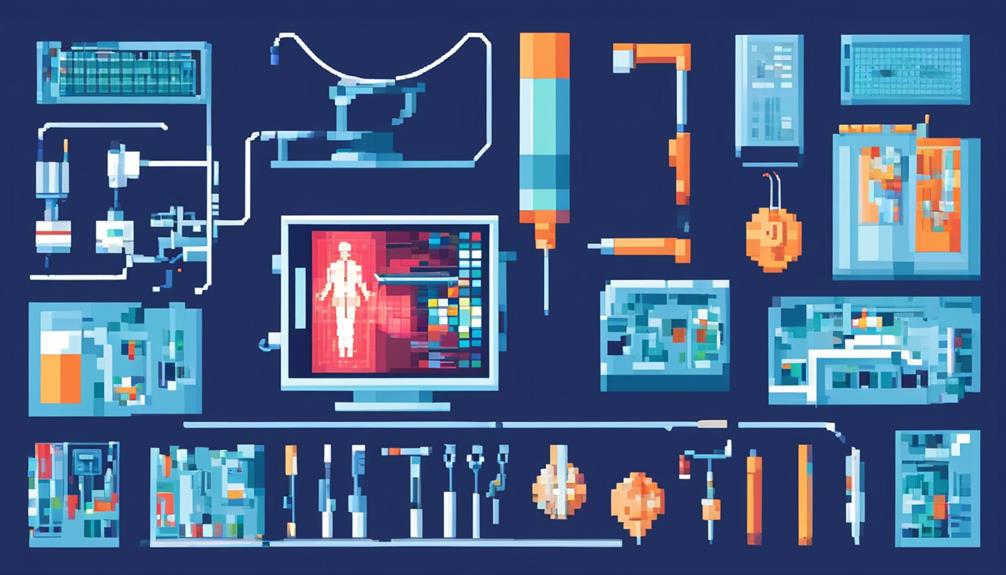Fiber optic sensors have revolutionized the field of sensing and measurement, offering a wide range of applications and advantages. These sensors, based on the principle of light propagation through an optical fiber, provide precise and accurate measurements of various physical parameters such as temperature, strain, and refractive index.
With their immunity to electromagnetic interference and ability to operate in harsh environments, fiber optic sensors find extensive use in structural health monitoring, oil and gas pipeline monitoring, and environmental monitoring. The inherent high sensitivity and accuracy of these sensors make them ideal for applications requiring precise measurements.
Moreover, their ability to multiplex allows multiple sensors to be connected to a single fiber, making them cost-effective and efficient for large-scale monitoring systems. Additionally, their compact and lightweight design enables easy installation and integration into existing systems.
Furthermore, the versatility of fiber optic sensors to operate over a wide range of temperatures, pressures, and frequencies makes them suitable for various industries and applications.
With such a vast array of applications and advantages, it is clear that fiber optic sensors are poised to play a significant role in the future of sensing technology.
Key Takeaways
- Fiber optic sensors have a wide range of industrial applications, including thermal monitoring, circuit analysis, and reliability control.
- They are highly sensitive and accurate in measuring temperature and can withstand high-risk environments.
- Fiber optic sensors are versatile in environmental monitoring, allowing for the accurate measurement of various parameters such as temperature, pressure, vibrations, and chemical concentration.
- They revolutionize monitoring and precision applications in the medical field, offering high sensitivity, reliability, and compatibility with healthcare environments.
Industrial Applications

Fiber optic sensors find wide-ranging applications in the industrial sector due to their ability to monitor and control various aspects of thermal performance, reliability, and circuit analysis. These sensors are adept at measuring temperature in high-risk environments, where conventional sensors may not be suitable. By utilizing optical fiber technology, fiber optic sensors offer high sensitivity and accuracy in sensing physical parameters such as temperature.
In industrial applications, temperature monitoring is critical for ensuring the efficient operation of machinery and equipment. Fiber optic sensors excel in this area, as they can withstand high temperatures without compromising their performance. They can be installed in challenging environments, including those with high electromagnetic interference, making them ideal for use in power plants, chemical processing facilities, and manufacturing plants.
One of the key advantages of fiber optic sensors in industrial settings is their distributed sensing capability. Unlike traditional sensors, which provide localized measurements, fiber optic sensors can be distributed over a large area, allowing for the monitoring of multiple points simultaneously. This enables real-time monitoring and immediate detection of any abnormalities or changes in temperature, ensuring prompt intervention and preventing potential damage.
Furthermore, fiber optic sensors are invaluable in circuit analysis, where they help engineers understand and analyze the behavior of dependent sources. By measuring and monitoring electrical signals using optical fiber sensors, engineers can gain insights into circuit performance, identify potential issues, and optimize circuit designs.
Environmental Monitoring
Environmental monitoring plays a crucial role in ensuring the safety and sustainability of various ecosystems and industrial processes. Fiber optic sensors have emerged as a valuable tool in this field, offering numerous advantages for environmental monitoring applications.
Here are three key advantages of using fiber optic sensors for environmental monitoring:
- High Sensitivity and Versatile Installation:
- Fiber optic sensors are capable of detecting temperature, pressure, vibrations, and concentration of chemical species with high sensitivity. This allows for accurate and precise monitoring of environmental parameters.
- These sensors can be installed in limited spaces and are suitable for tight areas, providing versatility in their installation. This makes them ideal for monitoring in challenging environments where traditional sensors may not be feasible.
- Excellent Environmental Resistance:
- Fiber optic sensors are unaffected by electrical noise, ensuring reliable performance in environments with high levels of electromagnetic interference. This makes them particularly useful for monitoring in industrial settings.
- These sensors also exhibit excellent resistance to environmental factors such as temperature, humidity, and corrosion. They can withstand harsh conditions, making them suitable for long-term monitoring in various environments.
- Enhanced Performance and Reliability:
- Fiber optic sensors offer the ability to connect various types of special fiber units, allowing for customization based on specific monitoring requirements.
- They incorporate an automatic maintenance function for stability, ensuring consistent performance over time. Additionally, various features are available to improve performance and reliability, such as wavelength multiplexing and signal processing techniques.
Medical and Healthcare

In the field of medical and healthcare, fiber optic sensors have revolutionized monitoring and precision applications. These sensors, which utilize the transmission of light through tiny fibers, offer numerous advantages that have significantly improved medical procedures and patient care.
One of the key advantages of fiber optic sensors in the medical field is their high sensitivity and resolution. These sensors can accurately detect and measure various physical parameters, such as temperature and refractive index, with exceptional precision. This makes them invaluable in monitoring vital signs, tracking patients' conditions, and enabling minimally invasive procedures.
Another advantage of fiber optic sensors is their excellent environmental resistance. Unlike traditional electrical sensors, fiber optic sensors are immune to electrical noise and interference, ensuring reliable performance in healthcare environments. This resistance allows for accurate and consistent measurements, leading to more reliable diagnoses and treatments.
Furthermore, the compactness, flexibility, and biocompatibility of fiber optic sensors make them highly versatile in medical applications. They can be integrated with medical catheters and needles, allowing for real-time monitoring during surgical procedures or drug delivery. Their small size also enables them to be easily implanted or used in wearable devices, enhancing patient comfort and convenience.
The applications of fiber optic sensors in the medical field are vast and varied. They have contributed to the improvement of healthcare systems, enabling more accurate and efficient diagnosis, monitoring, and treatment. Additionally, fiber optic sensors have found application in food and water quality monitoring, as well as in various biomedical research areas.
Transportation and Automotive
With the advancements in automotive technology, the application of sensors has become crucial in enhancing vehicle performance and safety. Fiber optic sensors offer several advantages in the transportation and automotive industry, making them an ideal choice for various sensing applications.
- Immunity to Electromagnetic Interference: Fiber optic sensors are immune to electromagnetic interference, making them highly reliable in automotive environments where electromagnetic noise is prevalent. This ensures accurate and precise measurements, improving the overall performance of the vehicle.
- High Temperature Capability: Fiber optic sensors can withstand high temperatures, making them suitable for applications in harsh environments such as the oil and gas industry, aircraft jet engines, and automotive engines. They provide accurate and reliable measurements even in extreme temperature conditions, contributing to improved safety and efficiency.
- Distributed Sensors: Fiber optic sensors can be distributed throughout the vehicle, allowing for comprehensive monitoring of various sensing parameters. This enables real-time monitoring of critical components, ensuring early detection of faults and preventing potential failures. Additionally, distributed sensors provide valuable data for condition-based maintenance, optimizing vehicle performance and reducing downtime.
- Remote Location Sensing: Fiber optic sensors can be installed in remote locations within the vehicle, enabling the monitoring of inaccessible areas. This is particularly useful in automotive applications where space is limited or in harsh environments where direct sensing is not possible. Remote location sensing enhances safety and performance by providing valuable insights into the vehicle's condition.
Security and Surveillance

Fiber optic sensors play a vital role in ensuring the security and surveillance of various environments due to their high sensitivity and accuracy. These optical sensors are widely used in security and surveillance applications for their unique advantages.
One of the key advantages of fiber optic sensors is their immunity to electromagnetic interference, which makes them highly reliable for security systems. This ensures that the sensing parameter remains unaffected by external electromagnetic fields, providing accurate and consistent detection.
Another advantage of fiber optic sensors is their small size and weight, making them ideal for discreet surveillance installations. Their compact design allows for easy integration into security systems without drawing attention. Additionally, fiber optic sensors have the capacity for multiplexing, which means multiple sensors can be used in a single security system. This enables the monitoring of different areas simultaneously, enhancing the overall effectiveness of the surveillance system.
Furthermore, fiber optic sensors offer a wide range of operating temperatures, pressures, and frequencies, making them versatile for various security and surveillance environments. Whether it is monitoring temperature changes in critical areas or detecting vibrations and movements, fiber optic sensors provide accurate and real-time data for effective security measures.
Signal processing is another important aspect of fiber optic sensors in security and surveillance applications. The data collected by these sensors can be processed and analyzed to detect any abnormal activities or potential threats. This advanced signal processing capability enhances the overall security and surveillance system's effectiveness.
Moreover, fiber optic sensors can be remotely powered, which allows for flexible installation and reduces the need for frequent maintenance. This remote power capability ensures continuous monitoring without interruptions, making fiber optic sensors highly reliable in security and surveillance applications.
Frequently Asked Questions
What Are the Applications of Fiber Optic Sensor?
Fiber optic sensors have a wide range of applications in various industries. They are used for industrial monitoring, structural health monitoring, environmental sensing, medical diagnostics, aerospace applications, oil and gas industry, transportation systems, security and surveillance, telecommunications networks, and smart grid monitoring.
These sensors provide accurate and reliable data for monitoring and controlling processes, ensuring the safety and efficiency of operations in these industries. They offer advantages such as high sensitivity, compact size, and resistance to harsh environments, making them ideal for these applications.
What Are 5 Applications of Fiber Optics?
Fiber optic sensors have revolutionized various industries with their diverse applications. They have played a crucial role in the telecommunications revolution by enabling high-speed data transmission breakthroughs and ensuring seamless internet connectivity.
In the medical field, fiber optic sensors have contributed to significant advancements in diagnosis and treatment.
The oil and gas industry has also benefited from fiber optic sensors, utilizing them for enhanced exploration and extraction processes.
Additionally, fiber optic sensors find applications in military and defense, environmental monitoring, structural health monitoring, industrial automation and control, as well as aerospace and aviation advancements.
What Is the Advantage and Application of Optical Fibre?
The advantage of optical fiber lies in its ability to transmit data over long distances with minimal signal loss and high bandwidth. This makes it ideal for fiber optic communication, where it offers advantages such as high data transfer rates, immunity to electromagnetic interference, and scalability.
Furthermore, optical fibers find application in various fields, including structural health monitoring, medical applications, aerospace industry, environmental monitoring, industrial applications, oil and gas industry, transportation systems, security, and surveillance purposes.
Continued advancements in fiber optic sensing technology further enhance its capabilities and potential applications.
What Are Optical Sensors Give Applications?
Optical sensors are widely used in various applications due to their principles of operation, which involve the detection of light and its interaction with the surrounding environment.
Emerging trends in optical sensing technology include the development of miniaturized sensors, improved sensitivity and accuracy, and the integration of wireless communication capabilities.
In the healthcare industry, optical sensors are used for vital signs monitoring and non-invasive glucose sensing.
They also play a crucial role in environmental monitoring, industrial automation, aerospace and defense, structural health monitoring, transportation and automotive industry, food and agriculture applications, as well as robotics and artificial intelligence.
